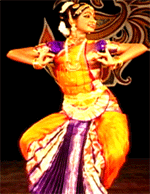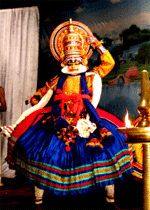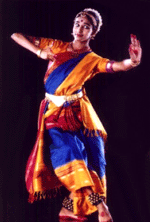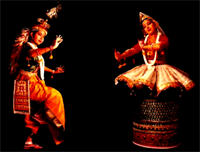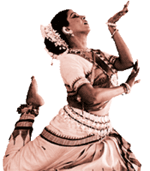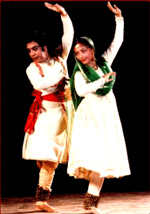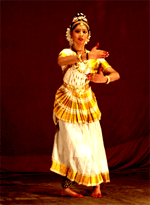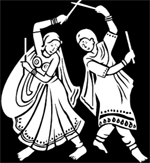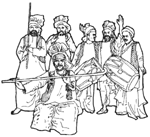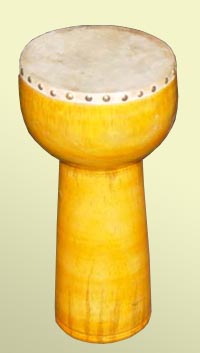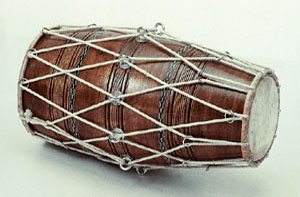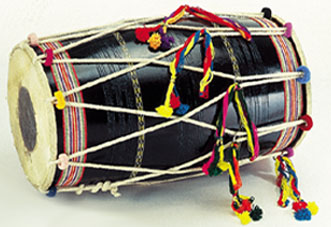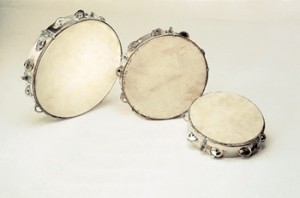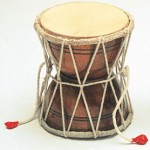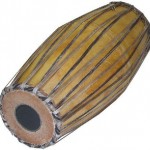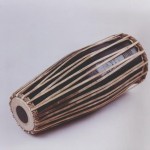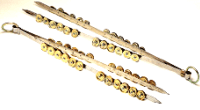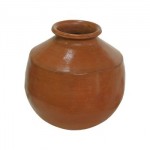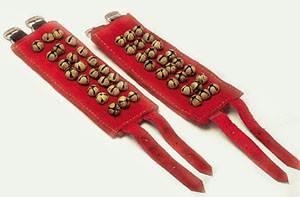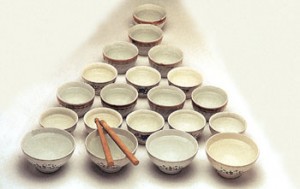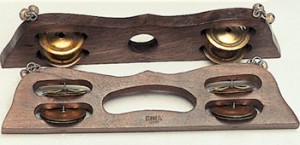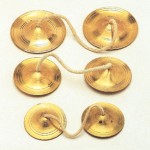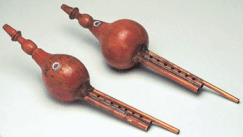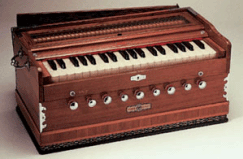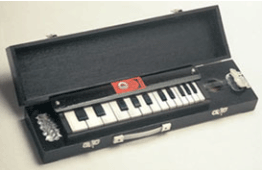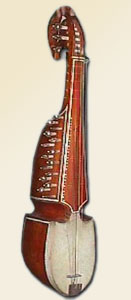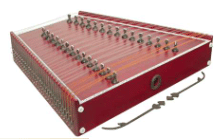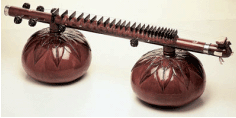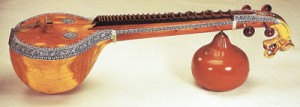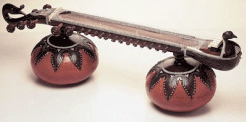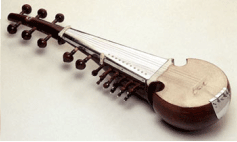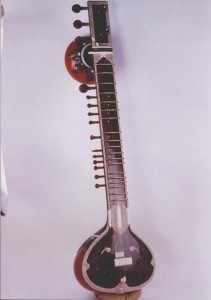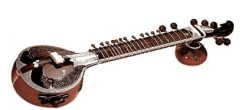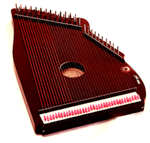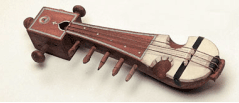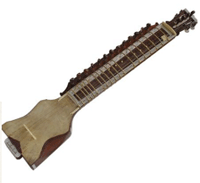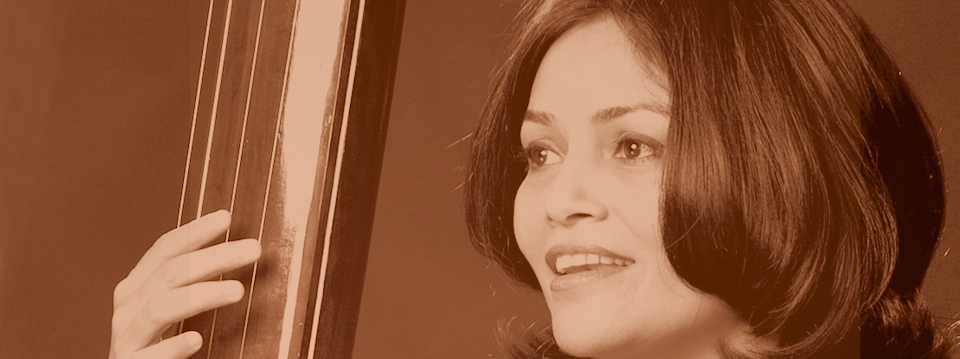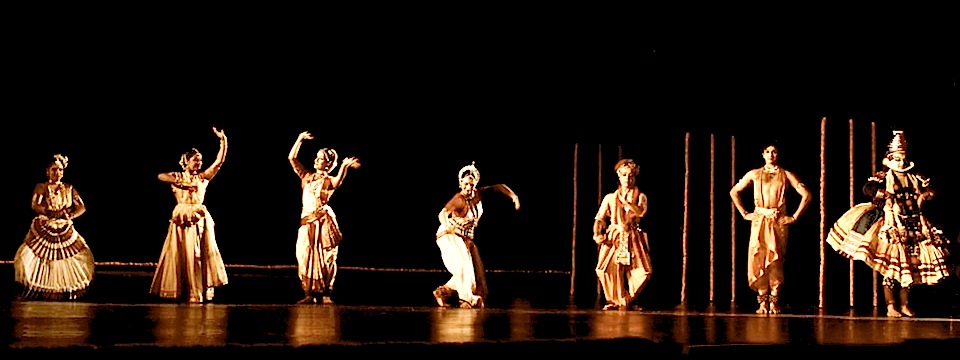
Classical Dances of India
Natya Shastra, probably the oldest manual on science of theatre in the world, confers a prime place to dancers on the stage. In ancient Indian theatre, dancers performed to songs sung in the background. Although the context has changed, the same logic has been carried forward in Indian movies, where choreography and playback singing are still indispensable parts.
History of Dance in India has been a very complex and controversial subject, but for the purposes of this site, we can conclude that whatever the process may have been, there exist only six classically acceptable dance forms in India, namely Bharatnatyam, Kathakali and Kuchipudi from South India, Odissi and Manipuri from East India and Kathak from North India.
Each of these dance forms has been described in brief below.
Bharatnatyam
Performer unknown,Photograph courtesy http://in.geocities.com/medhahari/bharatnatyam/bharatnatyam.html
Originating in Tamilnadu, in its present form, Bharatnatyam is probably the youngest of the six classical dances of India, since it was formalized as recently as 1930s! But when taken in its entirety, it may be the oldest dance form of India. Whatever be the fact, Bharatnatyam is one of the two most popular classical dance forms of India outside of India, along with Kathak (see below). It is said to be a hybrid of two ancient dance forms, namely Dasi Attam performed by Dev-Dasis in temples, and Sadr, a dance form popular in palaces of South India. Thus, having its roots in temples, Bharatnatyam is understandably a predominantly devotional dance form that has components describing and praising the Gods.
Kathakali
Performer – Kalamandalam Kuttanasan,Photograph courtesy www.wikepedia.com
Hailing from Kerala and readily recognizable by the costumes and makeup of its artists, Kathakali is the most dramatic of the six classical dances of India. In fact, due to its evolution amongst the masses and partly due to its predominantly local recognition, this dance form has had to fight for its right to be counted as one of the classical dances. Even today, most hardliners consider it to be just an old and traditional dance form rather than classical. It is known for its strong hand gestures called Mudra. Although the dance itself has strong religious overtones, traditionally, Kathakali performances are major social events for the community and last for good eight to ten hours, usually from Dusk to Dawn! Initiated audiences can identify the characters as being good or bad merely by looking at their appearance. The evolution of this dance form can be dated back to 17th century.
Kuchipudi
Performer – Shantala Shivalingappa,Photograph courtesy http://www.shantalashivalingappa.com
Known for its graceful movements and intense narratives, this dance form from Andhra Pradesh is (arguably) the most beautiful dance form of South India. Although it originated as a devotional dance form like the other two South Indian dances, Kuchipudieventually also came to be regarded as a dance form for social reforms.
Manipuri
Performers unknown,Photograph courtesy www.wikepedia.com
The term Manipuri is a misnomer, as this is a term given to include a number of dance forms from and around the Eastern Indian state of Manipur. The most popular dance forms within Manipuri style are the Ras-Leela and Phung-Chholom. This form is unique in that the percussion instruments are part of the dance itself, rather than being mere accompaniments! For instance, the Phung-Chholom variety gets its name from Manipuri Mridang – Phung, which is played by the dancers themselves. There are several forms of local dances included within the term Manipuri and it would be unfair to single out a particular dance form as being the true representative of this style.
Odissi
Performer – Late Protima Gauri Bedi,Photograph courtesy www.nrityagram.org
Best known for its attention to aesthetics and technical details, this ancient dance form from Eastern Indian state of Orissa has travelled a broken path to reach its present state, which is unfortunately a reconstruction of the actual classical dance form, which happens to be as old as 2000 years and is mentioned in Natya Shastra itself! It has three distinct roots – the Dev-Dasi form, the Royal court form and the transvestite form. Each one of these suffered a major blow during the colonial period and the entire Odissi tradition faced a near extinction except for a handful of surviving traditional performers, who helped rebuild this dance form in post independence era and re-established it as one of the classical dances of India.
Kathak
Performers – Padmavibhushan Birju Maharaj and his disciple Saswati Sen,Photograph courtesy www.wikepedia.com
Of all the dance forms of India, this dance form from the Northern states of India has the strongest national and international recognition, perhaps matched only by Bharatnatyam, if only the international presence was to be considered. So popular is this dance form that it is almost considered as the representative of the classical dances from India. Literally, the term Kathak means a storyteller. Thus, by definition this was a dance form devised to narrate stories of Gods in North Indian temples. But as the stage shifted from temples to royal courts, the emphasis of stories also shifted from Gods to entertainment. The present form of Kathak is that practised by Tawayafs (professional dancers), whose role is grossly misunderstood to this date. Tawayafs used to be professional female entertainers of Northern India and Pakistan, who were trained to sing and dance at the same time. Facial expressions and timing were given prime importance and it required the professionalism and discipline of the highest level to be a successful Tawayaf. Unfortunately, the contemporary form of Kathak has somehow forgotten the tradition of storytelling and what has survived is the mere technicality and grace, which are still sufficient to make it the most popular Indian classical dance!
Other Popular dances of India
Mohini Attam
Performer unknown,Photograph courtesy www.wikepedia.com
Bordering on the edge of being called a Classical dance, Mohini Attam is a very seductive dance form from Kerala, which is built on the story of Mohini (an incarnation of Lord Vishnu to save the Gods from Demons’ plan of stealing the Amrit).
Garba
Sketch courtesy www.4to40.com
Garba is a folk dance of the Western Indian state of Gujarat performed mostly during weddings and Indian festival of NavRatri. It is performed to characteristic six beat taal with a pair of sticks.
Bhangra
Sketch courtesy www.4to40.com
Probably the most popular folk dance form from India, Bhangrahas become the representative of Punjab all over the world. It is a powerful group dance performed to the beats of Dhol and is inherently merry in nature.
]]>
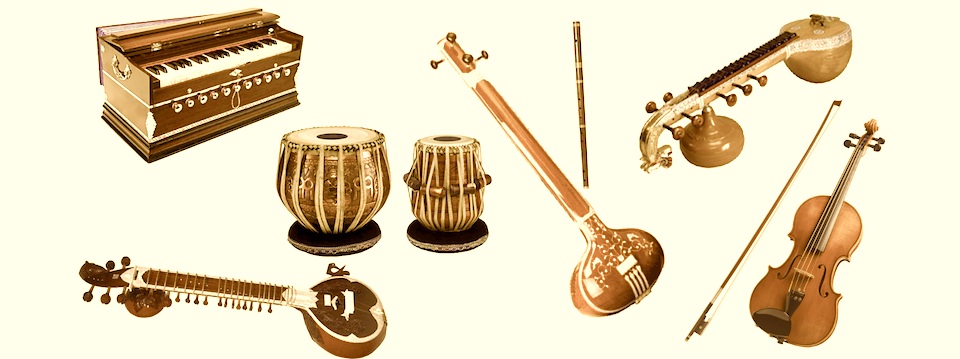
Indian Musical Instruments – Vaadya
Musical instruments have very important place in Indian Music. Indian musical instruments are divided into 2 major categories:
1. Percussion Instruments - A percussion instrument is any object which produces a sound when hit, shaken, rubbed, scraped or by any action which sets the object into vibration. The term usually applies to an object used in a rhythmic context or with musical intent. There are two types of percussion instruments in India.
|
a. Membranous Percussion Instruments (Avanaddh) - These are instruments that produce sound with strike-able membranes, mostly of weathered leather. Tabla, Dholak, Dhol, Daff, Damroo, Mridangam, Nagada, Pakhawaj, Khol (Mridangam), Nal (Dholki) etc. are examples of Membranous Percussion Instruments. |
| b. Non-Membranous Percussion Instruments (Ghan) - These are instruments that do not have strike-able membranes, and sound is produced by striking metal or clay. Chimta, Ghatam, Manjeera, Ghungaroo, Jal-Tarang, Kartal etc. are examples of Non-Membranous Percussion Instruments. |
2. Non-percussion Instruments - Instruments used to create melody rather than the rhythm are classified as Non-percussion Instruments. There are two types of Non-percussion instruments.
|
a. Wind Instruments (Sushir) - These instruments are sounded by blowing air through them. Bansuri, Harmonium, Shehnai, Nadaswaram, Shankh, Pungi etc. are examples of Wind Instruments. |
||
|
b. String Instruments (Tantu)- Instruments sounded by striking or rubbing their strings. There are two types of string instruments.
|
Membranous Percussion Instruments (Avanddha)
Chameli
This instrument is Indian equivalent of the African instrument Djembe. It has membrane on only one side and has a typical torch shaped body. It is used for accompanying certain folk dances.
Dholak
Dholak is a two sided barrel shaped North Indian instrument with a thin leather membrane on right side and a thicker leather membrane with special clay mix applied on the inside of left side. This allows the instrument to produce heavier bass beats from left hand and shriller treble beats from right hand. Traditionally the tuning of the instrument is adjusted with cross winding ropes but contemporary versions also have metal turnbuckles for tuning. Dholak is an indispensable instrument for light music and is used amply in Bhajans, Bollywood songs and Qawwalis.
Dhol
Dhol is a very popular two sided barrel or cylindrical shaped North Indian instrument very similar to Dholak but larger in size and differs from Dholak in that sides are struck with sticks rather than hands. Although Dhol is prevalent in most of East, West and North India, it is most commonly used in Punjab specially while performing the famous Bhangra dance.
Daff / Daflee
Daff is an Indian flat drum with leather membrane on one side of a large wooden ring. It is used mostly in Folk music and frequently employed by Bollywood music directors. Daflee is a popular version of Daff which has metal sounders at Perimeter of Daff.
Dumroo
Dumroo is probably the oldest form of percussion instrument in India. It is the only remaining form of hour-glass drums which are so commonly seen in ancient Indian statues. Its musical role is minimal and it is most commonly known for its association with Lord Shiva and monkey charmers. It is historically important in that it is considered the forefather of all two sided membranous instruments.
Mridangam
Mridangam is an indispensable South Indian percussion Instrument and holds same importance in Carnatic music as Tabla in Hindustani music. Its form is very close to Pakhawaj and differs in that the coating on left side is temporarily done with flour dough and has to be removed after each performance.
Pakhawaj
Pakhawaj is said to be originated from Dumroo and is considered to be the oldest percussion instrument in India as far as musical relevance is concerned. It is also a two sided leather membrane instrument with special clay mix (Masala) applied to both sides for sweeter sounds. Its mode of playing is similar to Tabla, but in a Dholak like fashion. Pakhawaj is a North Indian Instrument.
Tabla
Tabla is a pair of drums originated by dividing the Pakhawaj into two parts and closing the open ends. It is played in upright position with left hand playing the bass (Baya) and right playing the treble (Tabla). Both the drums have clay mix applied to them like Pakhawaj. Tabla is a North Indian Instrument.
Non-Membranous Percussion Instruments
Chimta
Chimta literally means a fire tong shaped tool used in traditional Indian kitchens to fetch Rotis from clay ovens and roasting pans. The musical version has brass jingles attached to the tong. It is mostly used in Punjabi folk songs and dances. Punjabi Shabad (an equivalent of hindi Bhajans) is traditionally accompanied with Chimta.
Ghatam
Next only to Mridangam, Ghatam is also an indispensable percussion instrument in South Indian Classical music. Literally, Ghatam means a fired clay pot, which is traditionally used by Indian households to keep water cool in summers. The musical version has a thicker shell created with special clay mix for superior sound. It is played by closing the mouth of Ghatam with stomach, which is opened as and when required to achieve desired bass, while the round base is struck with palm and fingers.
Ghunghroo
Ghunghroo has its roots in traditional Indian ornament Payal, which was and is still worn on ankles by ladies, mostly to indicate their presence, or declare their arrival. This was eventually picked up by Kathak dancers to accentuate their dance steps. The traditional form of Ghunghroo has bells woven on a series of strings, but the contemporary models have bells attached to cushioned pads (indicated in illustration). These provide more comform to the dancers.
Jal-Tarang
Jal Tarang is a unique instrument in that it is both a percussion as well as non-percussion instrument. Basically, it is a series of china clay bowls of descending size layed in a circle, or row or any other convenient configuration. These bowls are tuned to the notes of Raag being played by adjusting the amount of water held. When struck with chop-stick like strikers, these bowls produce very sweet sound and can be used to play solo with accompaniment of Tabla, or as an accompanying persussion instrument, mostly for dances.
Kartal
Kartal is a pair of wooden blocks with brass jingles. One block has a circular hole where the thumbs fits, and the other has a larger opening for the remaining four fingers. These two are struck to produce a characteristic wooden sound with metal overtones. Although it is seen being used in some folk music forms, Kartal is traditionally used to accompany devotional music like Bhajan and Kirtan. In North-east India, a form of Manjeera is known as Kartal, and is entirely different from the one explained above.
Manjeera
Manjeera is a pair of cymbals tied together with a string. Traditionally made from brass, Manjeera has been used to accompany Bhajans and Kirtans ever since the metal percussion instruments were created. A larger form of Manjeera is known as Jhanjhar.
Wind Instruments (Sushir)
Bansuri
Bansuri is Indian flute that can be found in both upright (fipple) and side on (transverse) styles. The traditional Bansuri is made of wood. The fipple style flute also comes in metal, but its use is limited to light music and Bollywood songs, because the fipple style doesn’t provide the luxury of embouchure (adjustment of position of lips and tongue while playing), that the transverse style provides. This is the reason why transverse wooden flute is considered to be the real Bansuri and the only form of flute accepted as fit for playing Indain classical music. Bansuri is also known as Murali and Venu, and is associated with Lord Krishna. Sometimes Lord Krishna is addressed as VenuGopal or Muralidhar (meaning one who plays flute).
Been
Been is a flute like wind instrument made with wood and Gourd. It has three sounding pipes, out of which only one has holes though with notes are controlled. The other two pipes provide the drone. It is not a classical instrument and has been traditionally used by snake charmers all over India. It has been applied with great success in Bollywood songs for movies made on stories based on snakes.
Harmonium
Harmonium is not a genuine Indian instrument and is not accepted by pundits as a pure instrument in Indian classical music. However, it has found its due respect in the lighter forms like Bhajans, Ghazals, Qawwalis and Bollywood songs. Basically it is a keyboard with metal reeds that is played by pumping air into the box with one hand, while the keyboard is played by the other. A form of Harmonium known as Sur-Peti doesn’t have any keys, and is used as a drone.
Nadaswaram
Nadaswaram or Nagaswaram is a large south Indian wind instrument very similar to Shehnai (see below). It is a 2 reeded instrument and is considered auspicious, and hence played in south Indian temples and in weddings or other religious ceremonies.
Shehnai
Shehnai is North Indian version of an Oboe. It is a close relative of Nadaswaram, only smaller in size and has 4 reeds instead of 2. Like Nadaswaram, it is also considered to be an auspicious instrument and is traditionally performed in temples or religious ceremonies. It is a must in any North Indian traditional wedding. Ustad Bismillah Khan immortalized this instrument though his mesmerizing performances.
Plucked String Instruments (Tat)
Banjo (Bulbul Tarang)
Banjo or Bulbul Tarang is considered to be Indian version of a Japanese instrument called Taisho-koto. Basically, it is a set of wooden keys or finger board placed over a set of strings, all tuned identically (to the same note). It is struck with right hand and keys are played with left hand. There is also a single string version of Banjo which is more commonly used in Bollywood music. Because of its ease of playing and cheap price, it is very popular in Indian households, and is amply used by folk artists.
Ektara
Ektara literally means a single stringed instrument in Hindi. It is constructed out of a gourd by passing a thin bamboo stick through it and tying a metal string that spans from bottom of gourd to top of bamboo stick. It is played as a rhythm accompaniment for folk songs in North and East India mostly in Rajasthan, Punjab and Bengal. It is known for its association with Saint Meera.
Rabab
Originated in Afghanistan, Rabab is an ancient stringed instrument made out of hollowed out wood covered with leather membrane. A series of Nylon and metal strings pass over the bridge which rests on the stretched leather membrane, imparting Rabab its characteristic timbre. Although it is a struck instrument, it is considered to be the forefather of many bowed string instruments such as Sarangi.
Santoor
Indian version of Santoor is an offshoot of the much wider Persian variety. Basically it is a 24 to 100 stringed hammered dulcimer, struck with wooden mallots to produce sound. Owing to the large number of strings, there is no standard way of tuning the instrument, and every artist adjusts the tuning to some degree, to suit his style of playing. It was very popular in Kashmir and eventually got accepted all over the North India. Pandit Shivkumar Sharma has been instrumental in getting it accepted as an instrument of merit as far as Classical music is concerned.
Veena
Veena is probably the oldest form of Indian stringed instruments, traditionally associated with Goddess Saraswati (Goddess of Knowledge). Listed below are some popular forms of Veena.
Rudra Veena
Very rare these days, it is a form of Veena constructed out of two large gourds connected with a thick bamboo stick, which carries the strings. It is played in upright position.
Saraswati Veena
The original form of Veena very popular in South India, Saraswati Veena is a 4 stringed instrument constructed entirely out of wood, most commonly out of jackwood. The resonator like piece seen at top of neck is actually non functional and is mostly used to rest the Veena on ground. It also has three drone strings which may are also used for providing taal while playing.
Vichitra Veena
Exclusively used in South India, Vichitra Veena is a form of Rudra Veena that is played like Hawaiian Guitar, with a metal bar.
Sarod
Sarod can be most simply described as a form of Rabab that doesn’t have any frets. It is not very old and probably evolved in the previous 150 years or so. Ustad Amjad Ali Khan has been instrumental in making this instrument popular all over the world.
Sitar
Thanks to Pandit Ravishankar, Sitar is probably the most well known Indian Instrument outside India. It has a main resonator and a secondary resonator, both made out of gourd and connected with a wide wooden shaft that has upto seventeen strings. Out of these, only three or four are playable strings, whereas another four strings are used as a drone to provide taal while playing. The remaining dozen strings or so are sympathetic strings that are never played, but resonate when corresponding note is played, imparting the Sitar its characteristic timbre.
Surbahaar
Surbahar’s construction is identical to Sitar. Very simply put, Surbahar is to Sitar what a Bass guitar is to Guitar. Surbahar is tuned an octave or two lower than Sitar. Owing to its inherent nature of providing intense Meend , many Sitarists use it to play Alaap, but shift to Sitar when they want to play Jhala or higher notes.
Swarmandal
A Surmandal literally means a group of notes in Hindi. It is Indian equivalent of an Harp and is used as a drone by vocalists.
Tanpura
Tanpura is a Drone instrument very similar to Sitar in appearance, only it doesn’t have the top resonator and frets. Hence, melodies can not be played with it. It has four or five strings tuned to the tonic. The Miraj version is most common in North India, whereas the Tanjore version, also known as Tamboora is popular in South India. Tanpura is known for its rich drone and its timbre is most readily identified as a typical Indian sound.
Bowed String Instruments (Vitat)
Chikara
Chikara is a basic spike fiddle that is played like Sarangi (see below).
Dilruba
Dilruba is a hybrid that combines the best of Sitar and Sarangi. One can consider it a Sitar played with a bow in Sarangi style. It is played mostly in North and West India. Its sound and style of playing are very similar to Esraj (see below).
Esraj
The technique of playing and sound being almost same, Esraj is often confused with Dilruba. We can look at it as an Eastern version of Dilruba.
Sarangi
Probably the most well known of Indian bowed string instruments, Sarangi is unique in that it is played by sliding fingernails on the strings rather than pressing them to touch the fingerboard. Being extremely difficult to play, its popularity is dwindling. It is traditionally played with Semi-classical vocal forms such as Thumri, Dadra and most commonly used to accompany Kathak performances.
]]>Vocal form of music is the strongest and the most dominant component of Indian music. Vocal music was considered to be a major part of Natya Shastra historically too. There are several old and new genres of Indian Vocal music such as:
Dhruvpad (Dhrupad)
Dhruvpad is the oldest style of North Indian classical music and it was very popular during the times of Tansen. Since it originated in King’s court, by nature it is either devotional or depictive of King’s glory. It is traditionally accompanied with Pakhawaj (an ancient Mridang), and has four characteristic components namely – Sthaee, Antaraa, Sanchari, Abhog. Dhruvpad is mostly sung in Chautal, Jhampa, Teevra, Brahma, Rudra and other ancient classical Taals. Taans are not used in Dhruvpad but Boltaans and tempo variations such as Dugun, Chaugun etc. are inherent.
Dhamaar
Dhamaar is similar to Dhruvpad, but romantic in nature rather than devotional. Its form is identical to Dhruvpad but it was traditionally employed to sing stories about Lord Krishna and his romantic adventures with Gopis, especially during the festival of Holi. It is traditionally sung in Dhamaar Taal of 14 beats, hence the name. Like Dhruvpad it also has Boltaans and tempo variations such as Dugun, Chaugun etc. and needs a lot of knowledge and expertise to be sung properly. For this reason it is also known as Hori and has evolved into a lighter version which is very popular form of folk singing in North India.
Khayal
Khayal means a thought or an imagination in Farsi and Urdu. Musically speaking, Khayal means an imaginative elaboration of a Raag while being within its confines. Since this form of singing originated in quiet environment of small Mehfils as opposed to King’s court, Khayals are characteristically sung softly and involve romantic compositions. Taans and Alaaps are employed frequently and abundantly in its rendition. It is sung in two basic tempos, Vilambit (slow) and Drut (fast). Those sung in slow tempo are called Bada or Vilambit Khayal and the ones sung in fast tempo are known as Drut or Chhota Khayal. Most common Taals used for singing Khayals are Teentaal, Ektaal, Jhaptaal and Adachautal.
Tarana
Tarana is a form of Khayal. It only differs from Khayal in that it doesn’t have lyrics and is sung based on meaningless syllables such as Ta, Na, Da, Re, Dim etc. It is mostly sung in Madhya (middle) and Drut (fast) laya (tempo) and characteristically becomes faster and faster as the composition progresses. Taans and Boltaans are very common in Tarana.
Sargam-Geet (Swarmalika)
A composition comprising Swar (notes) of a Raag and bound in a Taal is called Sargam-Geet. Lyrics are absent and the chief objective is to become familiar with the notes of a Raag.
Lakshangeet
A descriptive song listing the properties of a Raag, such as its Vaadi, Samvadi swar, Jaati, Recital time etc., composed using the same Raag that it describes is called Lakshangeet of that Raag.
Tirvat
Tirvat may be considered as a version of Tarana since its form and rendition are almost identical to Tarana except that it is sung to the bols of Mridang. Since it is difficult to master, it is less popular than Tarana.
Chaturang
A composition that comprises all the four basics namely Khayal, Tarana, Sargam and Tirvat in same order is known as Chaturang (Chatur means four and Ang means part, thus, four parts). First part has lyrics followed by Tarana bols followed by Sargam of the Raag and the composition ends with Tirvat.
Thumari
Thumari is a semi-classical form of Vocal music. It is considered semi-calssical since it does not remain loyal to one single Raag. It is a form of singing which gives prime importance to expressiveness rather than the lyrics or purity of Raag. It is also considered semi-classical since it does not use classical Taals often but rather the lighter versions such as Addha Tritaal, Keherva and Deepchandi. Its origin is considered to be in court of the famous Nawab Asifuddaula of Lucknow by a Punjabi singer named Miyan Shauri. Thumari singing is known for its variations, improvisations and experimentations with the structure of Raag in a bid to achieve the best possible expression. Probably this is why musicologists do not consider it a respectable form of singing.
Tappa
Tappa is Punjab’s version of singing Khayals but with a faster tempo and more interesting Taals rather than the classical Taals. Tappa compositions are characteristically very catchy and employ a lot of short but melodious Taans. It is considered to be the fore runner to Thumari style of singing.
Hori
Hori is a light classical form of singing Dhamaar. When Dhamaar is sung in lighter Taals rather than Dhamaar itself, the resulting composition is known as Hori. This is traditionally sung during the festival of Holi and describes the celebrations of Lord Krishna. Just like Dhamaar, use of tempo variations such as Dugun and Chaugun with Boltaans is very common in Hori.
Kajari
Kajari is the name given to songs sung in North India describing the rainy season. Since this season saw many brides waiting for their grooms to come back home, traditionally Kajari has also become associated with songs of separation. Its nature is romantic.
Chaiti
Chait is a month in Hindu calendar synonymous to March-April. Hence, the name Chaiti is given to traditional songs sung during spring in North India. This form of singing is very old and typically describes episodes from life of Lord Ram. Its lyrics are mostly Bhojpuri or Poorvi.
Dadra
Dadra is a lighter and easier version of Thumari. It is mostly sung in Madhya (medium) and Drut (fast) Lay (tempo), in Taals such as Dadra, Keherva or Roopak.
Bhajan
Devotional songs written in pure Devnaagari language and sung predominantly in Taals of 8 beats are known as Bhajans. This Taal is so typical that it is known as Bhajan Theka. Bhajans can be composed in pure Raags or in variations or combinations of Raags. Contemporary Bhajans are sung in almost all Taals including Dadra, Roopak, Deepchandi or even Teentaal.
Keertan/Dhun
These are devotional songs sung in praise of Gods such as Ram and Krishna. These have typically one or two line lyrics which are sung by a group of devotees in a repetitive composition that gains tempo as it progresses. Traditionally Keertans are accompanied with percussion instruments such as Kartal, Jhaanjhar, Manjeera or even mere claps. Membranous percussion instruments such as Tabla or Dholak are optional.
Ghazal
Ghazals are melodious recitations of Urdu or Farsi poems. Since Ghazal singing originated from poems, lyrics are of supreme importance and the composition and its rendition are merely employed to embellish the lyrics. For this reason a good command on language is essential along with a profound understanding of music in order to sing Ghazals, so that the singer can do justice to the lyrics.
Geet
Literally, Geet means song. The term Geet is used to denote a verse in Hindi which is not Bhajan, Keertan or any other classical form of Hindi verse or poetry. The songs from movies fall into this genre. There is no hard and fast rule for composition of Geet and the composer and singer have full liberty for all kinds of improvisations and experimentations. Geet may or may not be based on a Raag. It is the lightest version of Indian Vocal music.
Kawwali/Qawwali
Qawwali is a form of spiritual singing originated by Sufis in the 12th century. Typically the Qawwali starts with simple lyrics sung in a melodious composition and as it progresses the singer or Qawwal strives to find deeper meaning of the lyrics by improvising the compositions. When sung perfectly the singer and the listener both go in trance. Its nature has been devotional traditionally but contemporary Qawwalis are often romantic.
Lok-Sangeet (Folk Music)
Rural and traditional communities throughout India have evolved with their own regional customs and festivals which are celebrated with Folk music unique to that community. It is almost impossible to identify all kinds of Folk music in India however, some of the more popular specimens are Banna, Virha, Chandaini, Sohar, Jhoomar, Savani, Lavani, Barahmasi, Maand, Gauri, Janeoo, Bhaat, Pandvani, Suaa etc.
]]>